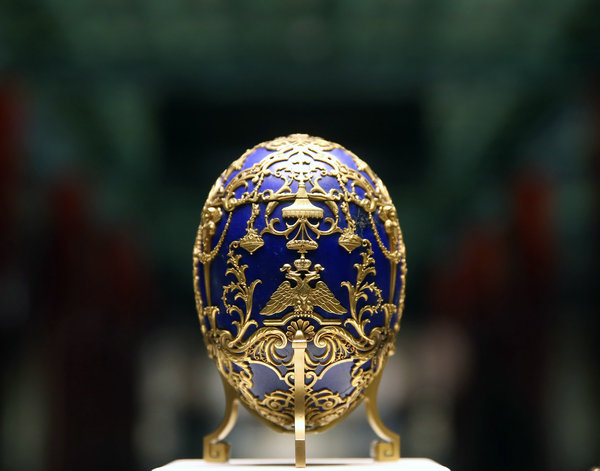 |
|
[Photo provided to China Daily] |
Song Haiyang, the Chinese curator of the exhibition, says: "After becoming popular in Russia, Faberge eggs became synonymous with luxury and were considered classics in Europe."
He also says that some techniques used to make the eggs were even more demanding than what were commonly used to make Chinese royal objects.
For instance, he says while in China enamel is usually used in cloisonne, and enamel painting without a metal outline is done rarely because it is difficult to execute, Faberge's company often uses the technique.
"And, it's also interesting to see patterns favored by the Chinese, like peonies and cicadas in Faberge's works. In top-tier luxury items, we find many similarities between the East and West," he says.
Barry Shifman, a curator from VMFA in charge of decorative arts from 1890 to the present, says the picture frame is another Faberge object favored by Russian nobles. More than 30 gold and silver frames have been brought to Beijing.